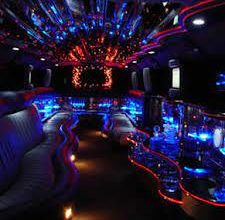The Future of Shipping: Exploring Hyperloop and Drone Delivery Solutions

Hyperloop Technology: High-Speed Cargo Transportation
Hyperloop technology is a revolutionary transportation concept that promises to transform the way we travel. It involves a system of high-speed pods traveling through a near-vacuum tube, eliminating air resistance and enabling speeds of up to 700 miles per hour. These pods, propelled by electric motors, utilize magnetic levitation and low-pressure environments to glide smoothly, offering an ultra-efficient and sustainable mode of transportation. Hyperloop aims to drastically reduce travel times between cities, making long-distance journeys faster, safer, and more convenient. By utilizing renewable energy sources and producing zero direct emissions, it also presents an environmentally friendly alternative to conventional transportation methods. With the potential to connect cities and regions, hyperloop technology holds immense promise for revolutionizing both passenger and freight transportation, reducing congestion, and fostering economic growth.
Hyperloop technology has the potential to revolutionize the shipping industry in several significant ways. With its high-speed capabilities and reduced transport times, the hyperloop can expedite the delivery of goods, enhancing supply chain efficiency and reducing inventory costs. Its ability to transport both passengers and cargo simultaneously offers a seamless integration of logistics, optimizing the movement of goods across long distances. This means that if it is built, hyperloop may eventually be the cheapest way to ship large packages. Additionally, the hyperloop’s sustainable and energy-efficient nature minimizes carbon emissions, aligning with the growing demand for eco-friendly shipping solutions.
The State of Drone Delivery
Currently, the last phase of shipping packages is mostly a manual process. We rely on people in delivery trucks to drive our products to their final destination. However, automated delivery drones are becoming more capable with each passing day. Over the past few years, various companies and organizations have been actively experimenting and implementing drone delivery initiatives. In some regions, drone delivery services have been successfully tested for specific use cases, such as delivering medical supplies to remote areas or transporting goods within a limited range. Companies like Amazon, UPS, and Wing (a subsidiary of Alphabet) have conducted trials and even launched commercial drone delivery services in select locations. However, there are regulatory hurdles, safety concerns, and technological limitations that need to be overcome. Regulations governing airspace, privacy, and safety protocols are being developed to ensure the safe integration of drones into existing airspace systems. Technological advancements, such as increasing drone range and payload capacity, are also being pursued to improve the efficiency and viability of drone delivery services. Though it may not be a widespread reality yet, there is a good chance we’ll soon be utilizing drones for shipping packages.
Integrating Hyperloops and Drones
The combination of hyperloop technology and automated drones holds tremendous potential for revolutionizing the shipping industry. By integrating hyperloop networks with strategically placed drone hubs, the shipping industry can benefit from an interconnected and streamlined logistics infrastructure. Hyperloop’s speed and capacity can facilitate the rapid movement of goods between major cities or hubs, covering vast distances in a fraction of the time it takes with conventional transportation methods. This enables faster shipping and reduces overall delivery times, enhancing customer satisfaction and meeting the demands of an increasingly connected global economy. At the same time, automated drones can take over the last-mile delivery, completing the transportation chain from the hyperloop hub to the final destination. Drones can navigate congested urban areas more efficiently, avoiding traffic and reducing delivery times. This can be particularly advantageous for delivering small packages, urgent medical supplies, or time-sensitive goods.
The potential integration of hyperloop and automated drones also offers significant environmental benefits. Both technologies are electric-powered, minimizing greenhouse gas emissions compared to traditional shipping methods. This contributes to sustainability goals and aligns with the growing demand for eco-friendly transportation solutions. Furthermore, this combined system can reduce operational costs for shipping companies. Hyperloop’s energy efficiency and reduced maintenance requirements can lower transportation expenses, while automated drones can minimize labor costs associated with last-mile deliveries.
Impacts on Supply Chain Efficiency and Customer Experience
New technologies like automated drone deliveries and a hyperloop also have significant implications for the supply chain. The first major impact is the speed at which products will be able to be delivered. With speeds of up to 700 miles per hour, the hyperloop can drastically reduce transit times between distribution centers, ports, and other key nodes in the supply chain. This accelerated speed translates into faster order fulfillment, reduced inventory holding costs, and improved customer satisfaction. This means that online shoppers can expect delivery times to become even faster than next-day delivery. Additionally, consumers will be given access to an incredibly wide range of products to choose from. Hyperloop has the potential to connect regions and enable seamless transportation across long distances. By bridging gaps between cities, countries, and even continents, the hyperloop can unlock new trade opportunities and expand market access. Supply chains can be reconfigured to leverage hyperloop networks, creating more efficient and cost-effective distribution channels. This increased connectivity can also enable businesses to tap into new markets and diversify their sourcing and distribution strategies.





